We hope that each of you, our readers, will appreciate this article we present about these 5 Remarkable West Virginia Invertebrates. It was certainly our pleasure to compile the information for you. May it provide you with both education and increased awareness.
These few species listed herein represent only a portion of the natural wonders found throughout the region, though. Yet, it’s our belief that they serve as excellent representations of the wonders found here. Check out some of our other articles for similar marvels.
Blue Orchard Bee
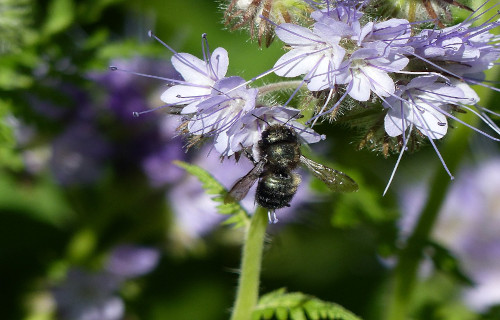
Blue Orchard Bee Facts
- Leading off this article about these 5 Remarkable West Virginia Invertebrates comes the gorgeous insect known as the Blue Orchard Bee.
- This small yet still intriguing invertebrate is most frequently referred to by this descriptive common name for obvious reasons. The Arthropod does have another, similar general name, though. That’s the slightly longer term of the Orchard Mason Bee.
- Within the scientific community, however, it’s typically referred to by its technical moniker. Fortunately for the layperson, that’s a much simpler name to pronounce than many of its relatives hold. That’s because it bears the official name of Osmia lignaria.
- It received that appellation due to the efforts of the respected American entomologist, Thomas Say. The researcher accomplished the first formal recognition of it as a separate and distinct species. That scientifically noteworthy deed occurred in the 1837.
- It’s of great interest in certain circles, due to its proficiency at pollinating certain crops. Long term geographical separation of its population eventually led to its division into two separate subspecies. One appears in the east, while the other lives in the west.
- In all parts of its range, however, the Blue Orchard Bee continues to maintain a sizeable and sufficient population base. That sets it apart from many of its less fortunate relatives. Due to this situation, the IUCN currently has no listing for it on the Red List.
- Nevertheless, this marvel of Nature must be considered to be facing several potential threats to its existence as a species. Most of these stem from the actions of humans. They include the perils posed by habitat loss, and of course, ongoing climate change.
Blue Orchard Bee Physical Description
The lovely Blue Orchard Bee certainly merits the attention applied to it. It’s a true masterpiece of evolution. The majority of its physical appeal, however, stems from its appearance, not size. That’s because, regardless of other attributes, it’s quite small.
Regarding its physical attributes, though, it follows a pattern common to related species. That’s in the fact that it displays a certain degree of the physiological characteristic of sexual dimorphism. In its case, this trait manifests in terms of body size and body structure.
Females of this insect attain a larger average length than their male counterparts. These reach an average length measuring roughly 0.55 in (1.4 cm). The body shape of the female also differs from the male, though only slightly. Females are a little stockier in build.
Males of the invertebrate, though only reach a total length averaging approximately 0.43 in (1.1 cm). As indicated above, their overall structure remains somewhat slimmer than females. He also has longer antennae, since these have 13 segments, while the female has 12.
The genders of the Blue Orchard Bee also vary a small degree in general appearance. Females of this natural wonder present a primarily iridescent bluish-gray that sometimes seems almost black. Her body further possesses a relatively dense covering of small hairs.
The male, meanwhile, follows the same overall pattern, with some minor yet notable differences. He typically develops a tuft of lighter colored hair on his head. Although he displays the same covering of fine hairs on his body, that’s less dense on the upper side.
- Kingdom: Animalia
- Phylum: Arthropoda
- Class: Insecta
- Order: Hymenoptera
- Family: Megachilidae
- Genus: Osmia
- Species: O/ lignaria
Blue Orchard Bee Distribution, Habitat, and Ecology
Thankfully, the amazing Blue Orchard Be evolved as native to a comparatively wide expanse of the globe. The full extent of that range might surprise some readers, though. That’s true since this intriguing insect developed as endemic to a large part of North America.
To the north, the intrepid invertebrate appears in all but the most northerly part of Canada. Further south, it makes its home in all but the most southerly parts of the United States. It’s absent from Florida, and the southeast Gulf Coast. It’s not presently known in Mexico.
In all regions in which it appears, the Arthropod displays strong preferences in its choice of habitat. The creature lives almost exlusively in regions of temperate forests. Further specifying its tastes, these areas of habitation consist primarily of various deciduous species.
For undetermined reasons, even within this area, the fascinating creature shows a strong favoritism for the edges of the forest. Such an environment provides it with its various needs. Those include suitable locations for both its nesting and appropriate food sources.
Unlike carpenter bees, the Blue Orchard Bee is unable to drill holes in wood for a nest. Instead, it seeks out such sites as reeds and natural holes in trees, even wooden structures. Though mostly solitary in nature, females do occasionally build nests near each other.
They’re principally active in early spring and summer periods. Though they feed on the nectar and pollen of numerous species, they do appear especially fond of pear, apple, and cherry trees. Males typically hatch first, and the first thing females do upon hatching is mate.
Eastern Cicada Killer
Eastern Cicada Killer Facts
- Next up among our choices for inclusion in this compilation of 5 Remarkable West Virginia Invertebrates is the Eastern Cicada Killer.
- This visually impressive creation of evolution most frequently goes by the somewhat deceptive common name that we’ve used here. The insect does have several other, less often used names, though. These include cicada hawk and cicada killer.
- Within scientific circles, however, it’s generally referred to by its technical title. Unfortunately, though, that’s a slightly difficult term to pronounce for the layperson. That’s because this fabulous Arthropod bears the official name of Sphecius speciosus.
- It received that tongue-twisting moniker due to the efforts of the British entomologist, Dru Drury. He accomplished the first acknowledgement of it as a separate and distinct species. The researcher managed this scientifically noteworthy deed in the year 1773.
- Though intriguing, the name remains somewhat confusing. That’s due to the fact that the same term’s frequently applied to a number of different species with its feeding habits. They’re also occasionally referred to as sand hornets, though not hornets.
- Luckily, the Eastern Cicada Killer appears to be maintaining a population base that’s both stable and sufficient. That fortunate trend further seems to hold true throughout the entirety of its range. The IUCN, therefore, has no listing for it on the Red List.
- Nevertheless, this wonder of Nature must be considered to be facing at least some potential threats to its existence as a species. Habitat degradation and outright loss pose potential dangers. Its greatest threat, though, likely consists of climate change.
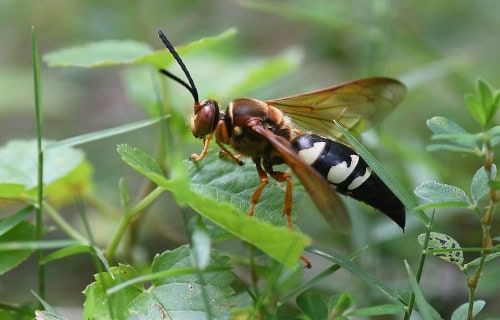
Eastern Cicada Killer Physical Description
The fascinating Eastern Cicada Killer quickly gains the appreciation of those who respect Nature. Unlike some species, however, it does so for several reasons. In its case, this occurs due to a combination of both its visual appeal and its sheer physical measurements.
Like many insects, it additionally displays a certain degree of the physiological characteristic of sexual dimorphism. In its specific situation, though, this trait manifests itself in terms of pure size. More precisely, females attain a larger average size than their male counterparts.
Both genders, though, vary significantly in body length, due to various local environmental factors. Overall, however, mature adults reach average total lengths ranging from 0.6 – 2 in (1.5 – 5 cm). Although rare, exceptional individuals sometimes exceed this length.
Otherwise, specimens of both sexes remain virtually indistinguishable to untrained observers. The general form is often described as robust, though elongated, as most of its kind. Its general appearance, in fact, resembles several species of yellowjacket and hornet.
The head of the Eastern Cicada Killer develops as comparatively large in relation to body size. Its eyes also attain a relatively large size for its kind. The long, jointed legs generally display a bright orange-yellow shade. The wings, meanwhile, show a light or dark brown hue.
It’s the body of this distinctive Hymenoptera that mosts catches the eye, though. The thorax, or middle section, shows reddish and black colors, along with a covering of dense hairs. It abdomen, however, manifests a black background, along with bright yellow stripes.
- Kingdom: Insecta
- Phylum: Arthropoda
- Class: Insecta
- Order: Hymenoptera
- Family: Crabronidae
- Genus: Sphecius
- Species: S. speciosus
Eastern Cicada Killer Distribution, Habitat, and Ecology
The impressive Eastern Cicada Killer evolved as native to a moderately broad swathe of the world. That’s also a region of the globe well known for its abundance of natural marvels. This is true since it evolved as endemic to a portion of the continent of North America.
That’s where the mild deceptiveness of its name comes into play, though. It’s true that the invertebrate appears in the eastern sections of the United States, to be sure. Yet, it also lives in the midwest part of the country, in addition to Mexico and parts of Central America.
This intrepid creation of evolution developed as highly versatile and adaptible in its choice of habitat, too. That’s a large aid in its survival. Within its native range, the insect makes its home in a wide range of locations. This even includes around areas of human habitation.
It makes its home by burrowing into the ground, to construct a nest. To do so, it merely requires the soil to be well-drained, preferably sandy or loose clay in composition. It often appears in areas of grass-covered banks and hills, and next to raised sidewalks and patios.
The Eastern Cicada Killer evolved as solitary in nature, unlike more eusocial species. Adults emerge in summer, usually late June or early July. These typically feed on a wide variety of flowers for their nectar, as well as the sweet sap of various locally available plants.
Males tend to be quite aggressive towards each other, establishing breeding dominance. To humans, though, they pose no dange, since they have no stinger. Only females possess this appendage, using it to stun their prey. Their main food consists of cicadas, thus the name.
Monarch Butterfly
Monarch Butterfly Facts
- Holding down the third spot in this gathering of 5 Remarkable West Virginia Invertebrates, the gorgeous Monarch Butterfly does so only due to random selection.
- This breathtaking creation of Nature and evolution most frequently goes by the well deserved name across its vast range. It has other less often used titles, though. These include such terms as common tiger, wanderer, and black-veined brown.
- Inside of scientific communities, however, it’s better known by its official moniker. Fortunately for the layperson, that’s a comparatively simple title, as such things go. That’s because this marvelous Lepidoptera bears the official name of Danaus plexippus.
- The invertebrate received that name due to the efforts of the esteemed Swedish zoologist, Carl Linnaeus. He recorded the first recognition of the creature as a separate and distinct species. The researcher accomplished this feat in the year 1758.
- A total of three species actually bear the same general appellation. The specific one referred to in this article, though, is the best known and most commonly referred to. A total of six acknowledged subspecies of the insect also exist across the globe.
- The gorgeous Monarch Butterfly inhabits a moderately large range. It also engages in impressive seasonal migrations. Sadly, the amazing beauty now finds itself in danger. Accordingly, the IUCN thus lists it as Endangered on its Red List of Threatened Species.
- It now faces many threats to its existence. That’s true in both short and long term. Most of these, though, stem from human activities. Human herbicide use has killed much of its food source. It also now faces the same threat of climate change as we all do.
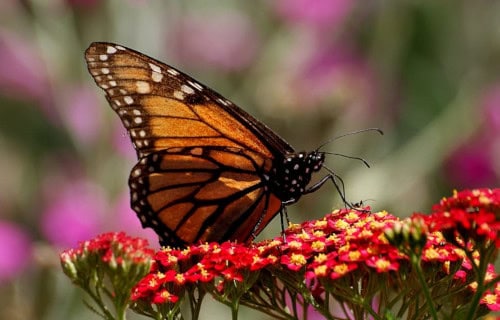
Monarch Butterfly Physical Description
The captivating Monarch Butterfly fully merits appreciation by those who encounter it. Unlike some of its many relatives, though, it does so for several reasons. Its sheer beauty certainly qualifies as one factor. Yet it also boasts some impressive statistics in terms of size.
It does follow one pattern that’s common among its kind, as well. That’s due to the fact that the insect displays a degree of sexual dimorphism. In its case, this physiological trait manifests itself in terms of both size and appearance. As the name implies, its regal.
Physically, males of the species attain a slightly greater wingspan than their female counterparts. But they also display a small difference in terms of appearance. It’s a very minor one, though. On one vein on each hindwing of the males, a tiny black spot displays.
Otherwise, the two genders of the Arthropod present a very similar structure. The wings of both sexes reach an average width of approximately 3.5 – 4 in (8.9 – 10.2 cm). The body, meanwhile, develops as elongated, mostly black, except for a few white spots on the head.
It’s the wings of the aptly-named Monarch Butterfly that garner the most attention, however. The uppersides typically present a tawny orange hue. The many veins of the wings also show black, along with their margins. Two series of small white spots also line those edges.
The forewings additionally show small orange spots near the tips. The undersides displays similar, but not identical patterns. Their hindwings are yellowish brown, with larger white spots. Its forewings also manifest the same yellowish-brown color on their tips.
- Kingdom: Animalia
- Phylum: Arhropoda
- Class: Insecta
- Order: Lepidoptera
- Family: Nymphalidae
- Genus: Danaua
- Species: D. plexippus
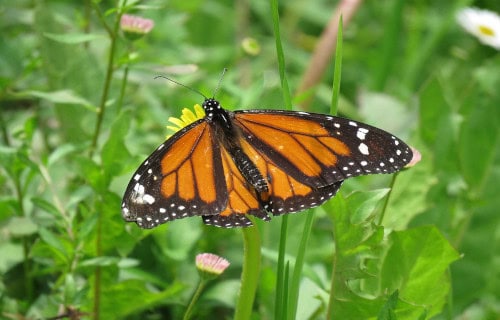
Monarch Butterfly Distribution, Habitat, and Ecology
The stunning Monarch Butterly evolved as native to a relatively broad swathe of the world. The sheer scope of that range might surprise some people, though. That’s true since this insect marvel appears in parts of both the Northern and Southern Hemispheres.
Part of that extends from southern Canada, in North America, to southern South America. It’s also found in Hawaii, Bermuda, the Cook Islands, and other islands in the Caribbean. From there, it also appears from Australia to the Philippines, and as far as Morocco.
This wonder of evolution developed as primarily present in several specific habitat types. Yet it does display some versatility and adaptability. Most individuals, however, make their home in regions consisting of either meadows, grasslands, praries, and along roadsides.
Most further display a strong preference for the presence of other determining factors. These include such things as proximity to smaller streams, and areas of sufficient sunlight. The awesome creature additionally prefers the presence of sufficient roosting plant life.
The magnificent Monarch Butterfly is also famous for its massive migrations. A majority of the population migrates to a singly location in Mexico for the winter. Following this, the female lays her eggs during the return trip. These she places on the underside of leaves.
Those eggs most commonly appear on the foliage of milkweed. Despite their toxicity to most species, the larvae consume them vorcaciously. Adults typically live 2 -5 weeks. During that time, they too consume vast quantities of nectar from a wide variety of flora.
June Bug
June Bug Facts
- Making its presence felt next in this compendium of 5 Remarkable West Virginia Invertebrates comes the intriguing creature known as the June Bug.
- This intriguing product of Nature and evolution most frequently goes by the appropriate common name listed in this article. Yet it’s sometimes known by similar variations of this term. These include such titles as June Beetle and Green June Beetle.
- Among entomologists, however, it’s better known by its technical name. Fortunately for the interested layperson, that’s a relatively simple term, as such things go. That’s because this wonder of creation bears the formal name of Cotinis nitida.
- It received that reasonably simple technical name due to the efforts of Carl Linnaeus. The eminent Swedish zoologist and botanist accomplished the first recorded recognition of it as a separate and distinct species. He achieved that recognition in 1758.
- Regardless of the term one chooses to use, it remains a very fascinating insect. Unfortunately, though, it’s considered something of a destructive species. It’s also sometimes confused with another, related invertebrate that lives within the same range.
- Within its native territory, the June Bug appears to be maintaining a population base that’s both stable and sufficient. That situation further seems to hold true throughout the entirety of that range. The IUCN, therefore, currently does not list it on the Red List.
- The insect nevertheless does face the same potential threats as most other creatures. Most of them stem from the actions of man. These include such dangers as habtitat degradation and loss. It also now faces the perils posed by ongoing climate change.
June Bug Physical Description
The appealing June Bug is a variety of invertebrate that captures the attention of many people within its range of habitation. It’s usually of more interest for its sheer visual appeal, than simple physical size. That’s because the insect ranks as an average-sized beetle.
Unlike many of its relatives, though, it displays no noticeable degree of sexual dimorphism. Due to the lack of this physiological characteristic, adults of both genders remain virtually indistinguishable to the untrained eye. Yet what they does see merits appreciation.
Mature adults attain a total body length averaging from 0.6 – 0.9 in (15 – 22 mm). Exceptional individuals, however, sometimes measure up to 1.06 in (27 mm) in length. The body of the Arthropod also reaches an average width of approximately 0.5 in (12 mm).
It’s the exoskeleton of the aptly-titled June Bug, though, that usually gets the most attention. That’s due to the vibrant color scheme generally presented by fully mature adults. This background most commonly develops as an almost uniformly bright metallic green.
Nevertheless, a percentage of specimens present a very different appearance. Some individuals manifest a primarily dull brown background. In these cases, that’s typically accompanied by thin green stripes. The margins of the forewings also show orange yellow.
- Kingdom: Animalia
- Phylum: Arthropoda
- Class: Insecta
- Order: Coleoptera
- Family: Scarabaeidae
- Genus: Cotinis
- Species: C. nitida
June Bug Distribution, Habitat, and Ecology
The intriguing June Bug evolved as native to a somewhat small expanse of the globe. The location of that zone of habitation, though, won’t surprise many people. That’s true since it developed in a region of the world already known for its wide variety of insect life.
More precisely, it developed as endemic to the continent of North America. Even there, however, the small animal makes its home in only a specifc portion of it. The vast majority of its population appears in the east and midwest portions of the United States.
There, it lives from Florida in the southeast, to Texas in the west. Northward, though, this territory extends up into the midwest as far as Nebraska. In the far northeastern region, the natural marvel appears as far north as the southeastern portions of the country of Canada.
In all portions of that native range it displays the same preferences in where it makes its home. These, however, include a wide variety of ecosystems. Individuals often appear, sometimes in numbers, flying close to the ground. They prefer fields, lawns, and forests.
After mating, the female June Bug lays 60 – 75 eggs underground. These subsequently hatch after about 18 days, into the larval form. They mainly feed on mold and humus, but in numbers can severely damage plants and even lawns. Thus they’re considered pests.
The adults of the species typically finally appear in June, thus the name. These mainly feed on a variety of fruits. That includes grapes, peaches, berries, apples, nectarines, figs, and pears. Its own natural predators are quite numerous, including birds, especially blue jays.
Black Widow
Black Widow Facts
- Closing out this article about 5 Remarkable West Virginia Invertebrates we present perhaps the equally famous and infamous Black Widow.
- Perhaps most notably for most individuals, this amazing creation of Nature represents a very dangerous variety of spider. Placed in the Latrodectus genus, many of these reclusive arachnids are also known to some people simply as widow spiders.
- Experts also currently list 32 known species in this genus, spread throughout much of the world. The three species endemic to North America remain the most commonly known, though. Each of these arachnids shares many physical traits.
- The common name for these dangerous invertebrates derives from the high prevalence of sexual cannibalism in the Black Widow. After mating the larger female commonly, though not always, kills and then feeds on the smaller male.
- The toxin of its bite additionally remains considered by most experts to be especially dangerous. The invertebrate earns this distinction due to the presence of the neurotoxin latrotoxin. This represents an especially dangerous type of venom.
- Only the bite of the female typically presents any danger to humans, however. That’s because she generally has far larger venom glands than her much smaller male counterpart. Despite its reputation, though, few bites actually result in fatalities.
- Presently, the majority of species grouped under this common name continue to have stable populations. The IUCN, therefore, does not list them on its Red List. These amazing spiders nevertheless face the same threat from climate change as we all do.
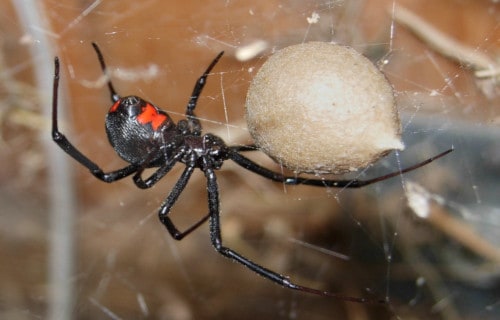
Black Widow Physical Description
Not surprisingly, the various species of Black Widow attain similar physical sizes. However, this remarkable arachnid typically displays a significant amount of sexual dimorphism. This physiological characteristic manifests itself in terms of both color patterns and size.
That’s partly because the female attains an average length of about 1.4 in (3.5 cm), whereas the male stays much smaller. He most commonly only reaches an average length of roughly 0.7 in (1.75 cm). The males also do not display the characteristic red hourglass.
Color patterns also vary relatively significantly between the various forms. All members of this genus, however, appear predominantly black in color. The females of each species, though, all display a very prominent red hourglass shape on their abdomens.
- Kingdom: Animalia
- Phylum: Arthropoda
- Class: Arachnida
- Order: Araneae
- Family: Theridiidae
- Genus: Latrodectus
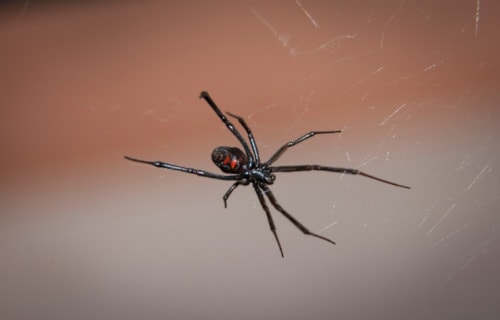
Black Widow Distribution, Habitat, and Ecology
The three species of Black Widow that evolved as native to North America remain the best known of the varieties. The incredible genus also thrives in many other areas of the world, though. In fact, the various species inhabit every continent of the world, except Antarctica.
Quite understandably, given its nearly global distribution, habitat types vary widely. Nevertheless, members of the genus most commonly live in temperate and tropical climates. A few of them, though, even live in extremely arid regions of the world.
Individuals usually build their webs in locations such as around rubble, small trees and bushes, in the wild. But, when found inside of human habitations, webs usually appear in isolated areas, such as attics and garages. This fortunately makes encounters rare.
When a human gets bitten, the venom of a Black Widow commonly causes a condition known as latrodectism. Experiences include profuse sweating, vomiting, muscle rigidity, and extreme pain. These symptoms typically persist for 3-6 days, but can last longer.
All currently known members of this genus hunt as ambush predators, laying in wait in the web. It feeds opportunistically, making a meal of any small creature caught in its web. Its diet, however, typically consists of mosquitoes, grasshoppers, beetles, and such.

5 Remarkable West Virginia Invertebrates
We hope that each of you enjoyed reading, and hopefully learning from, this article we’ve written about these 5 Remarkable West Virginia Invertebrates. It’s also our hope that doing so has left you with either a new or renewed appreciation for such wonders of Nature.
Unfortunately, however, many of their kindred around the world now find themselves facing strong threats to their continued existence as a species. Many of those dangers, in fact, stem from the actions of mankind. We must do all we can to protect and preserve them all.
Check out our other articles on 5 Fabulous Mammals of Florida, Earth’s Many Stunning Waterfalls, 5 Rare Mind-Blowing Cloud Types, Spectacular Dolphins Throughout Our World
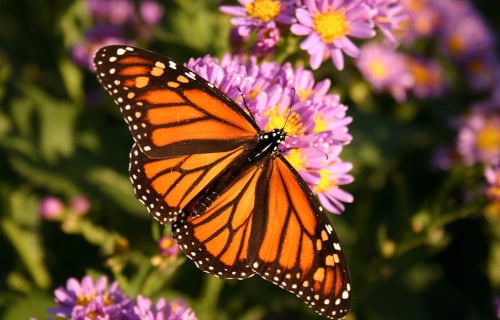
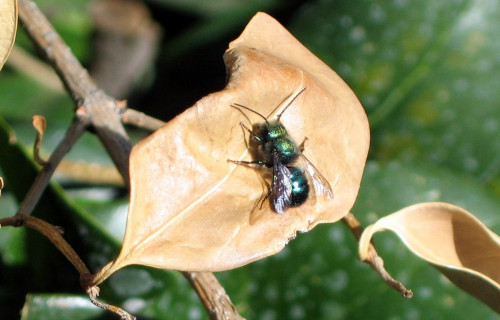
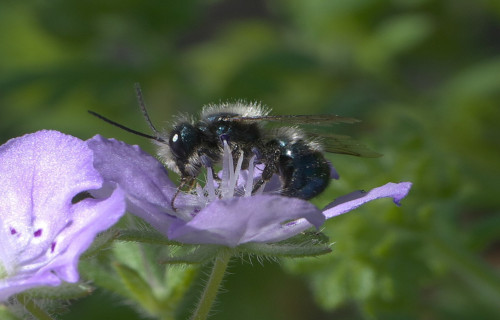
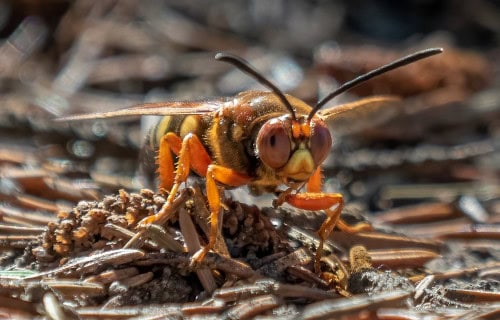
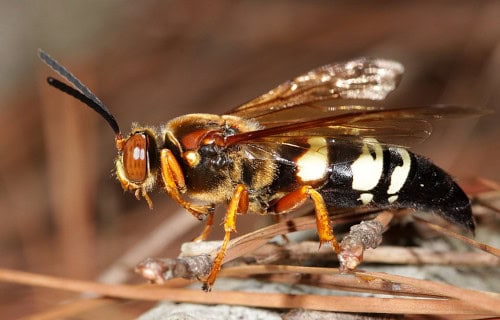
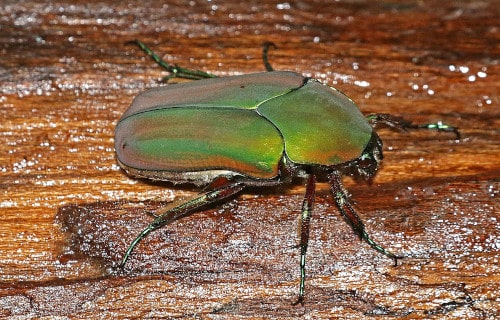
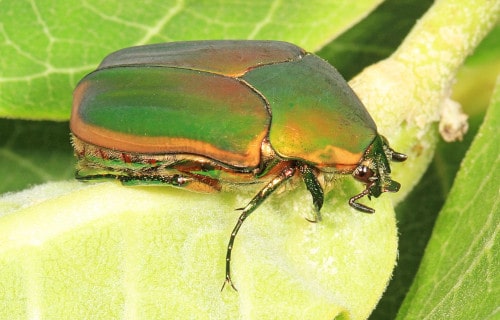
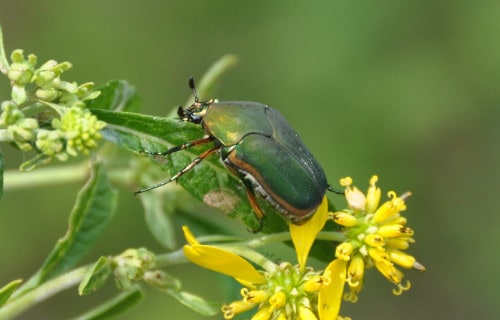
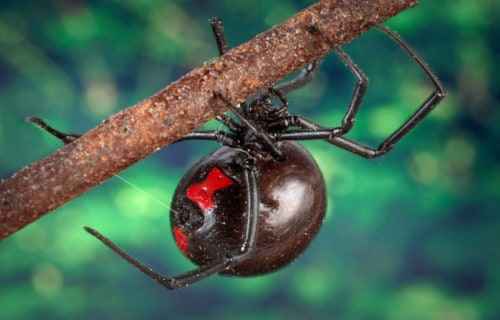









Leave a Reply